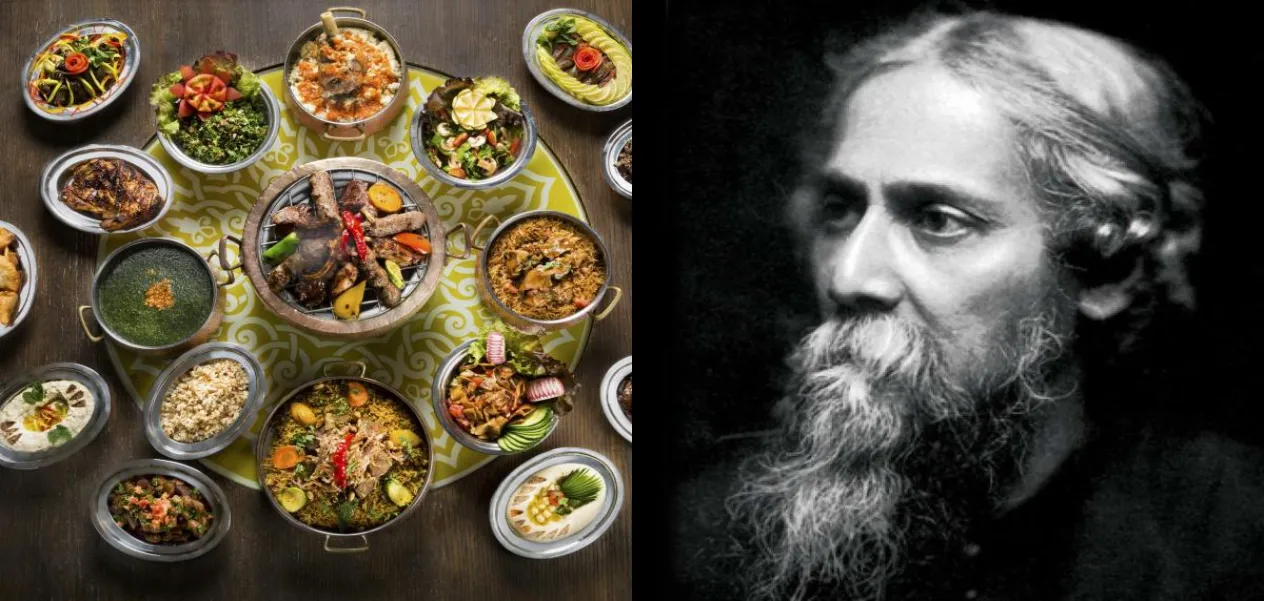
Sumana Mukherjee / New Delhi
India’s first Nobel Laureate Rabindranath Tagore was obsessed with food. Interestingly, for some reason, he didn’t like chili powder in his food. So, the cooks at Jorasanko Thakurbari, the ancestral house of Tagore family, sprinkled sugar on dishes to suppress the hotness of the most commonly used spice in Indian kitchens. Like Gurudev’s poetry became the pride of every Bengali, his innovation for food also became a part of the Bengali culinary tradition.
Jorasanko Thakurbari is the ancestral house of Rabindranath Tagore located in North Kolkata, which is today a museum where the Tagore family’s legacy is displayed. It's a heritage building and part of the Tagore University as well.Tagore, born in 1861, emerged as a poet, thinker, writer, philosopher and painter and he was also a great food enthusiast. Thakubari was a prominent majestic family of Kolkata during the British era and the family lived a lavish life.Their experiments with food have inspired a chapter in the history of Bengal’s culinary culture. Tagore’s obsession with food had created a glorious legacy that influenced generations. With exclusive ideas and innovative methods of cooking, they added treasures to Bengal’s food legacy.
.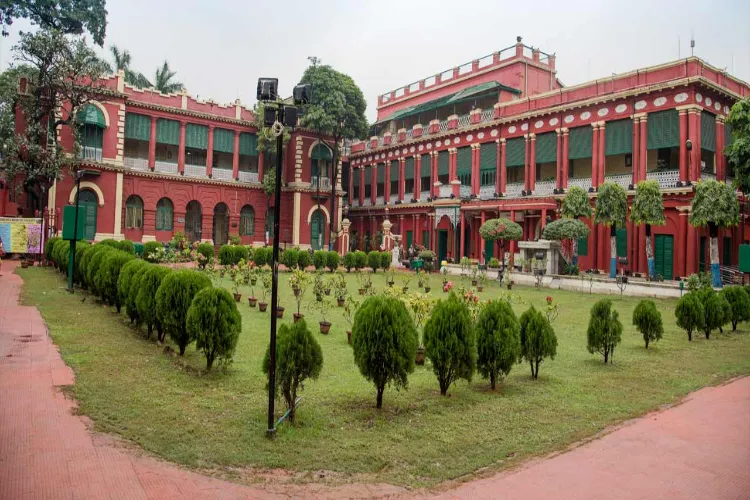
Jorasanko Thakurbari (House of the Tagore family)
Rabindranath’s father Maharshi Debendranath Tagore was the founder of a whole new religion, called Brahma Dharma. This religion had its roots in the work of Raja Rammohan Roy and Prince Dwarkanath Tagore, who founded a reformist society called Bramho Samaj. In spite of all the riches and a royal background Debendranath lived like a saint. and he was one of the most admired philosophers of his time who cordially greeted positive changes in the society. As a matter of fact, his family members and descendants, were open to advanced thoughts, ground-breaking ideas and experimentations.
The Tagores were an influential family during the pre-independence era. When Bengal was on the rise - politically and socially - its members played a vital role in shaping its future.Most interestingly women in Jorasanko Thakurbari were not treated as captives, they lived the life full of honour and reverence in a milieu where women were not treated well. The Tagore women were encouraged to go for innovative ideas for their culinary expertise.

Women were encouraged for creativity inside this house
the women inside the Tagore household were the pioneers of a silent revolution in Bengali cuisine. All the ladies in the family were extremely talented and they had a passion for cookery. Tagore family was very much open to learning and they had lots of exposures to western culture as well. Due to that Tagore family women took great interest in leaning western recipes alongside traditional and international dishes. and simultaneously applied their knowledge in their Thakurbari kitchen. It is no exaggeration to say that the movement for women's empowerment subtly started inside the Thakurbari.
Rabindranath’s wife, Mrinalini Debi was an expert cook who took pleasure in creating recipes for sweets. Her off-beat recipes were Paka aam-er mithai (Ripe Mango sweet), Chirer Puli, (Poha based sweet) Doi-er Malpoa, (Sweets made of yogurt) Mankochur Jilipi (Jilabi made of arabi) She had her own little kitchen where she used to get absorbed with her culinary discoveries. She used to take the charge of all preparations whenever there was any family gatherings or occasions.
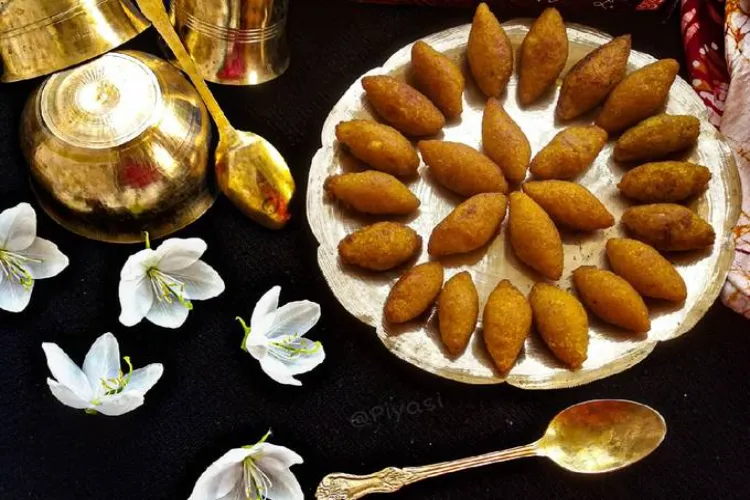
Chirer Puli ( Decicious Poha based sweet)
Tagores were the trend setters and possibly the ultimate supporter of modernisation of the society and at the same time they had great reverence for their deep-rooted culture. They lived in a joint family culture where200-300 people of one clan lived under the same roof. The palatial house of Tagores known as Thakurbari in Kolkata used to echo the pure joy and contentment of togetherness. People used to take the example of Tagore family when it came to accord. They established the values of living in a joint family Their togetherness actually gave birth to a whole new concept of Adda or Jalsa or gathering which is highly celebrated in Bengali households.
Kobiguru Rabindranath himself used to innovate new recipes and he was very fond of sharbat. He invented a whole new recipe of sharbat called Daab er Sharbat (Green Coconut meat Sharbat). They used to serve it to every family member and to all the visitors in the household. His passion for sharbat or sherbet had always been populer.
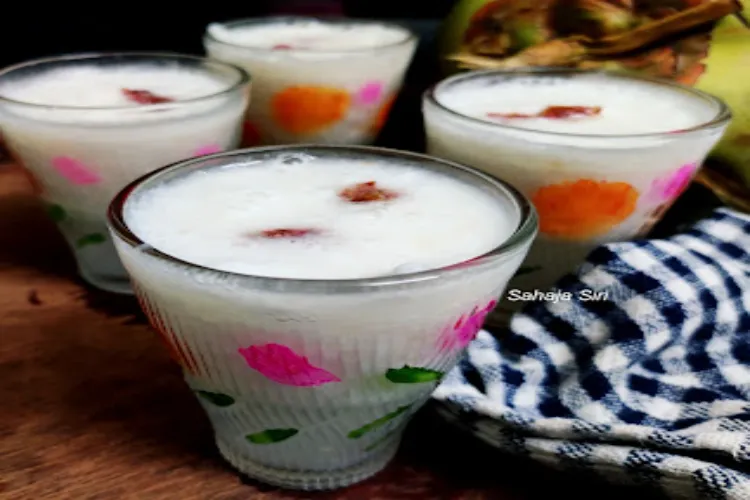
Daab er Sharbat (Green Coconut meat Sharbat)
The family possessed a unique blend of off-beat creativity.They played a vigorous role during the Bengal Renaissance and their openness to innovative ideas came as an indispensable part of their very own legacy. It was not limited to a particular territory and crossed the boundaries,
Rabindranath personally liked Hilsa Fish, Chitol Fish, Moong Dal, and Prawn Malay Curry. As far as the traditional taste was concerned, he loved to start his meal with Sukto (Mix vegetable curry) and end with Mishti paan (sweet paan). He had a great fetish for kebabs He loved Mitha Kebab, Hindustani Turki Kebab, and Chicken Nosi Kebab. Dudh Shuktanni was a favourite delicacy of the Tagores.
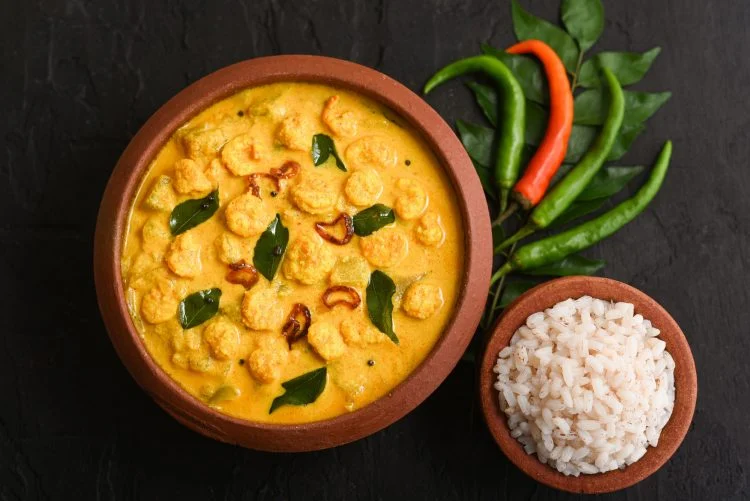 Rabindranath liked Prawn Malay Curry.
Rabindranath liked Prawn Malay Curry.
On his 50th birth anniversary Rabindranath received a surprising gift called Phoolkopir Sandesh (Sweet made of Cauliflower) which was an awesome sweet dish. It was specially named as Kabi Sangbordhana Barfi. Chandrapuli, kheer (condensed milk) and coconut shreds, Malpoa with khoya and coconut and so many delectable sweet dishes were enjoyed by the family members. Rabi Thakur’s favourite sweet was Chandra Puli, made of coconut and kheer (condensed milk); Narkel Chirey, Aamshatta were some of the mouthwatering delicious items invented by the Tagore women. They were also very successful in making western dishes like British pastry.
.webp)
Malpoa and Kheer
Tagores were known as the visionaries, pioneers and the dedicated followers of traditions altogether It was simply rarest kind of combination that made them famous world-wide. Following the traditional way, Tagore family-members used to sit on the mat spread on the floor for their scrumptious lunch and that was eaten with bare hands, dinner was served at the dining table, in the British style. It was their candidness and sense of acceptance that made them adapt some of the positive aspects of the western nations. Legendary Tagore family of Jorasanko helped Bengal to obtain the imperial respect all over.
